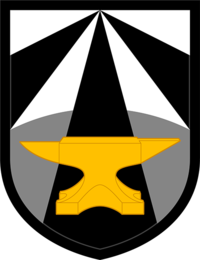About
FAQs
Q:
What is the mission of the MOMRP?
A:
The Military Operational Medicine Research Program (MOMRP) mission is to develop effective medical countermeasures against operational stressors and to prevent physical and psychological injuries during training and operations in order to maximize the health, performance and fitness of Service members and their Families, and support the Army Force 2025 and Beyond (F2025B) and Department of Defense (DoD) Total Force Fitness (TFF) concepts.
Q:
How is the MOMRP portfolio of research projects organized?
A:
MOMRP research is focused on four research portfolio areas: Environmental Health and Protection, Injury Prevention and Reduction, Physiological Health and Performance and Psychological Health and Resilience.
Q:
Where is the research performed?
A:
MOMRP effectively manages a comprehensive network of collaborative research partners, including internal DoD organizations, and extramural organizations such as academic institutions, industry, other federal agencies, and international military research organizations. MOMRP intramural research is performed at the following laboratories: the US Army Research Institute of Environmental Medicine (USARIEM), Natick, MA; the US Army Aeromedical Research Laboratory (USAARL), Fort Rucker, AL; the Walter Reed Army Institute of Research (WRAIR), Silver Spring, MD; and the US Army Center for Environmental Health Research (USACEHR) at Fort Detrick, MD.
Q:
What drives the research focus of the portfolio areas?
A:
Service members train and fight across the range of military operations often under harsh conditions. Threats addressed by the research performed under each of the MOMRP portfolio areas include: environmental extremes of heat/cold, hydration, and high-altitude as well as threats to pulmonary health and exposure to chemical and materiel toxicants; internal and external physical injuries such as severe brain trauma from blast overpressure, blunt and penetrating trauma, musculoskeletal and training injuries, and neurosensory injury; physiological stressors including inappropriate nutrition, poor physical fitness, inefficient sleep quality, sleep deprivation, fatigue, and burnout; psychological and behavioral health threats to Service members and their Families including occupational stress and trauma, suicide, concussion, alcohol and substance abuse, family separation, and violence.
Q:
How are MOMRP research projects funded?
A:
Funding for the MOMRP comes from various sources: Army research, development, testing, and evaluation (RDT&E) Core funding and Joint Program Committee-5 (JPC-5) Military Operational Medicine funding, which includes congressional special interest [CSI] money and Defense Health Program (DHP) dollars from the Office of the Assistant Secretary of Defense for Health Affairs (OASD(HA)). Projects fit into the following research areas: basic research, applied research, development of candidate solutions and prototypes, and advanced product development, primarily for knowledge products. MOMRP works closely with the Joint and Army Advanced Medical Development community to drive products to fill capability gaps across the Joint Force.
Q:
What are some accomplishments of each of the portfolio areas?
A:
The following is a representative list of MOMRP accomplishments/highlights:
- Altitude Readiness Management System (ARMS): Integrated handheld software decision aid to plan, monitor and manage unit altitude exposure of unacclimatized Soldiers; predicts altitude illness risk and performance.
- Soldier Water Estimation Tool (SWET): Integrated handheld software decision aid to provide potable water intake requirements for mission planning in hot environments. ARMS and SWET mobile applications delivered to Nett Warrior in 2015.
- Real-Time Physiological Status Monitoring (RT-PSM): Wearable system of physiological and performance sensors to assess Soldier thermal strain, energy expenditure, cognitive and physical performance; provides actionable information to prevent injuries and predict readiness. Partnered with PM Medical Support Systems at the US Army Medical Materiel Development Agency (USAMMDA).
- Physical Demands Study: The US Army Training and Doctrine Command (TRADOC) and the USARIEM initiative to determine performance requirements for physically-demanding military occupation specialties (MOSs) and develop gender-neutral standards and assessments to match Soldiers to the most appropriate MOS, increase MOS success and prevent injuries. Follow-on Occupational Physical Assessment Testing (OPAT).
- Fatigue and Sleep Management: Developed 2B Alert, a user-friendly platform-specific tool to predict alertness based on sleep/wake history, circadian factors, and the use of countermeasures. System being used by US Air Force and Federal Aviation Administration (FAA).
- Load Carriage Decision Aid (LCDA): Comprehensive tool that predicts Soldier metabolic cost as a function of individual and clothing characteristics, load carried, terrain, weather, and nutritional intake. Tool provides Soldiers and their leaders with guidance to prevent physical injuries associated with over-burden with the ultimate goal of improving mission success. Currently in Advanced Development.
- PTSD: Three weeks of compressed exposure based therapy appears to be as effective as 15 weeks of weekly sessions. Massachusetts Institute of Technology’s (MIT’s) Army Behavioral Health System study findings and recommendations are being implemented in the DoD Military Health System (MHS) transformation and the Army’s behavioral health system of care.
- Suicide: Brief Cognitive Behavior Therapy for Suicidality reduced the likelihood of re-attempts by 60% in a high-risk active duty population. Study on vulnerability during the transition from military to VA status led to the Warm Handoff Policy by the Defense Centers of Excellence for Psychological Health and Traumatic Brain Injury (DCoE). Bereavement Study led to development of the Postvention Checklist by the Defense Suicide Prevention Office (DSPO).
- Resilience: The WRAIR team is delivering evidence-based validated resilience training to the Army Resiliency Directorate via the Research Transition Office, e.g., validated mindfulness training, Behavioral Health Leadership modules for Embedded Behavioral Health Providers. Mental Health Advisory Teams (MHATs) have led to numerous evidence-based recommendations that have impacted policy.
Q:
What is on the horizon for the MOMRP?
A:
Future Environmental Health and Protection research will oversee development of biomarkers for exposures to military relevant environmental hazards for the Joint force. Future Injury Prevention and Reduction research will include the development of predictive models for Service member training and operational performance to reduce overuse and exertional musculoskeletal injuries. Physiological Health and Performance research efforts will investigate mechanisms to optimize effective sleep that benefit Service member health, readiness and performance. Research efforts will continue to determine the most effective nutrient profile to promote performance in demanding field operations as well as investigate eating behavior interventions at military dining facilities to sustain optimal health and readiness. Future goals of the Psychological Health and Resilience portfolio are to enhance resilience, reduce negative risk-taking behaviors and improve effectiveness and optimization of treatments for post-traumatic stress disorder, suicide, substance abuse, and other behavioral health disorders.
Q:
I have a great idea! How can I receive funding?
A:
Apply to the USAMRDC Broad Agency Announcement (BAA), specific Program Announcements, Small Business Innovation Research/Small Business Technology Transfer (SBIR/STTR) announcements, and/or New Product Idea Announcements. Encourage collaboration with DoD labs and stakeholders and attendance at DoD state of the science meetings.



